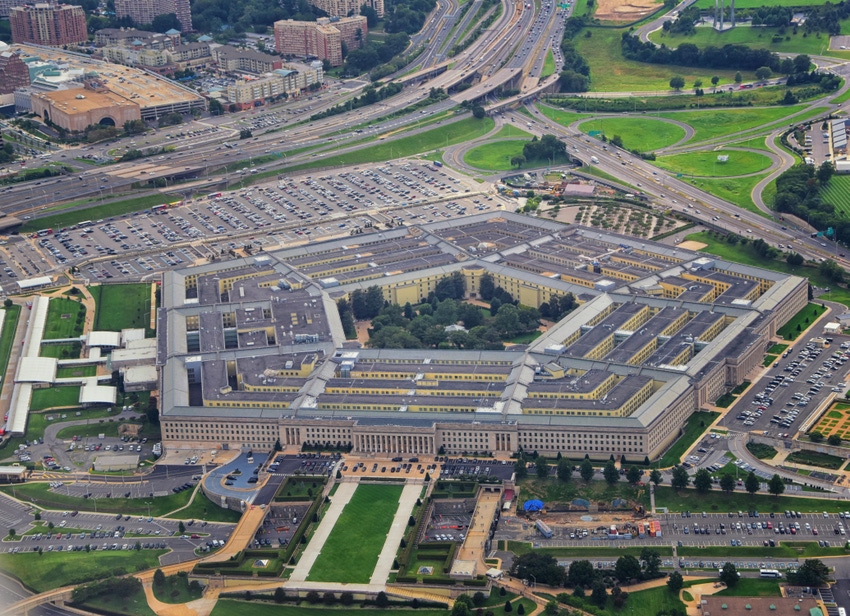Ericsson, Nokia get serious about US military's 5G biz
Ericsson and Nokia have recently established new divisions focused on selling equipment and services to the US government, with a goal of cashing in on the military's investment in 5G.

Ericsson this week announced its new Ericsson Federal Technologies Group (EFTG), a division dedicated to selling the vendor's services and equipment to the US government, including the Department of Defense (DoD). The move comes just weeks after Nokia announced its own Nokia Federal Solutions (NFS) unit.
"As the DoD looks to connect under one secure, unified communication system, I believe 5G is the solution to keep America secure and competitive," said Ericsson's Christopher Ling, head of the EFTG, in a release. Ling was previously at Booz Allen Hamilton, most recently as the head of the company's national security business in the US.
Ericsson declined to answer questions from Light Reading about the company's new division, including how many employees it might house and its expected revenues.
'Just what the doctor ordered'
Analysts said the moves by Ericsson and Nokia are unsurprising and could be attempts to offset sluggish demand for 5G gear among network operators.
"Mobile operator spending has been depressed for the last year or so as 5G rollouts have slowed, and that's taken a toll on both vendors," analyst Ed Gubbins, of GlobalData, wrote in response to questions from Light Reading. "Tapping a revenue stream outside of the operator community is just what the doctor ordered for both companies, though I'm not sure when revenue from this activity is expected to ramp up or be meaningful."
Analyst Joe Hoffman, with Omdia, largely agreed. (Omdia and Light Reading are owned by the same parent company, Informa.) Hoffman noted that there are around 800 military installations around the US, and each one could support at least a handful of 5G transmission sites. That means the DoD might purchase equipment for a few thousand cell sites. By contrast, AT&T and Verizon each operate networks spanning roughly 60,000 cell sites.
"It's not huge," Hoffman said of the DoD 5G opportunity. "It's not like you're selling to Verizon or AT&T."
"But then, there's always services that go along with it," Hoffman added, noting that the US government is expanding investments into networking software.
Growing the opportunity
Nokia has long eyed the market for private wireless networking services, and Ericsson fully joined Nokia in the sector at the beginning of last year. However, analysts don't believe the private wireless networking market is nearly as big as some vendors had hoped.
"I think revenue from enterprises is just barely more than 10% of their total revenue at this point," Gubbins wrote. "The mobile operator networks business still dominates by far. More revenue from government agencies could help."
That's led Nokia and Ericsson to flesh out efforts among federal customers.
For example, Ericsson announced last year that it's eyeing the US military as a potential customer. "There's a lot of interest in the US government now for adopting 5G," Mike Murphy, Ericsson's top technology executive in North America, said at the time. "We'll be delivering products to the DoD."
Separately, Nokia announced late in 2023 that it would acquire Fenix Group, a privately held US company that specializes in "tactical" mobile communications solutions for the defense industry.
Now, both companies are formalizing their effort to sell into the government, and both are coordinating the push with related efforts to manufacture their products on US soil. Those efforts dovetail with the Biden administration's "buy America" requirements.
5G for soldiers
Ericsson and Nokia are hoping to sell their 5G gear across the whole of the US government, but in targeting the military specifically, they could find themselves competing directly with Lockheed Martin, the DoD's biggest contractor and a company that's also investing heavily into 5G.
It's clear why all three companies see the military as a significant opportunity. "The DoD is all-in on 5G," said the agency's deputy undersecretary of defense for research and engineering, Lisa Porter, in a 2019 keynote.
As Light Reading has previously reported, JADC2, which stands for Joint All-Domain Command and Control, is the Pentagon's vision for connecting "sensors with shooters across all domains, commands and services." Meaning, it would be a comprehensive, interoperable wireless networking system to connect everything owned and operated by the Pentagon. JaDC2 is expected to focus heavily on 5G.
The DoD has been spending heavily on 5G, allocating roughly $650 million over the past three years to various research and development projects. "We estimate roughly $100 billion a year of R&D that the commercial industry puts into telecommunications. So, that's how they're advancing," Thomas Rondeau, the Defense Department's principal director for FutureG, said recently, according to Defense One. Rondeau explained that the US military hopes to tap into part of that investment and innovation.
And the DoD is now required to install private wireless 5G networks on all US military bases. There are almost 800 such bases around the world.
Open RAN twist
But there's one interesting twist in the US military's pursuit of 5G: DoD officials want to use open RAN interfaces in their deployments. Doing so would give the military the ability to mix and match vendors without being locked into a single company.
That open RAN preference aligns directly with the new strategies of Nokia and Ericsson. Nokia has long voiced support for open RAN, while Ericsson has recently developed its own successful approach to open RAN. That approach helped Ericsson score AT&T's $14 billion 5G open RAN contract.
"Ericsson recently scored a big win over Nokia: a big deal with AT&T, the largest in Ericsson's history, that even includes the replacement of some Nokia gear with Ericsson's," Gubbins wrote.
About the Author(s)
You May Also Like




_International_Software_Products.jpeg?width=300&auto=webp&quality=80&disable=upscale)







